Electrical Safety – GCSE Physics
Introduction
- Electricity is a powerful form of energy used in our daily lives for lighting, heating, and operating devices.
- Electrical safety means being careful around electricity to avoid accidents, injuries, or even death.
- It can be dangerous if not used properly, which is why it is important to learn how to handle electricity safely.
What is an Electrical Safety?
- Electrical safety means taking precautions to prevent electric shocks, burns, fires, and damage to appliances when using electricity.
- The earth wire is used for safety because it carries excess current to the ground and stops the metal parts of appliances from giving electric shocks.
- Electricity can travel through the human body, causing serious injuries or death if safety is ignored.
- Learning electrical safety helps to avoid accidents, save lives, and protect property.
Where is Electrical Safety Important?
- Homes (using plugs, switches, and appliances safely).
- Schools (science labs, computer labs).
- Workplaces (offices, factories, hospitals).
- Construction sites (using heavy electrical equipment).
Electrical Safety Precautions:
- Turn off the switch before plugging in or removing a plug.
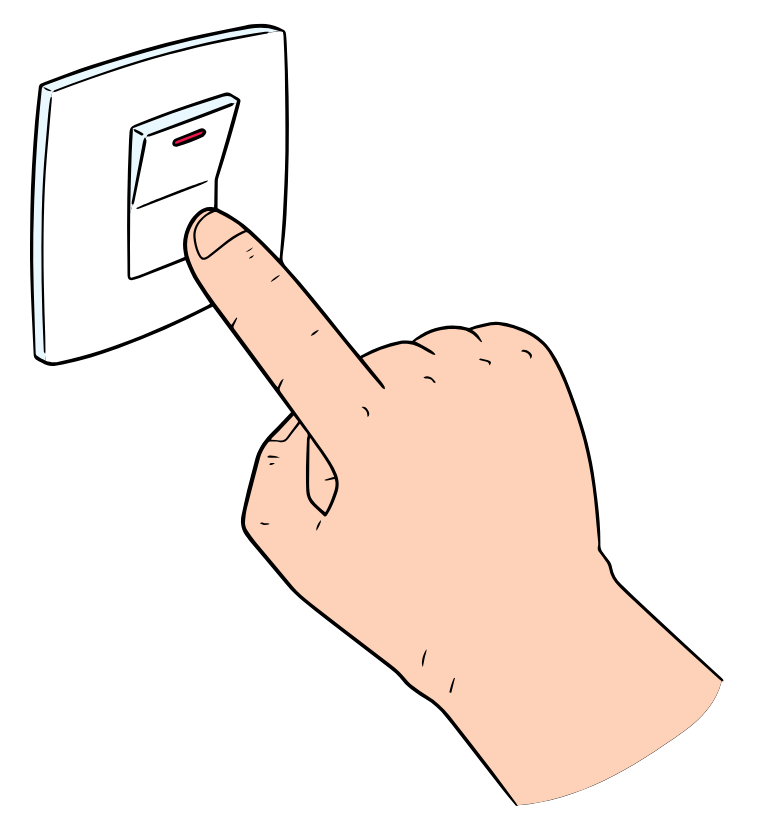
- Do not overload sockets with too many devices.
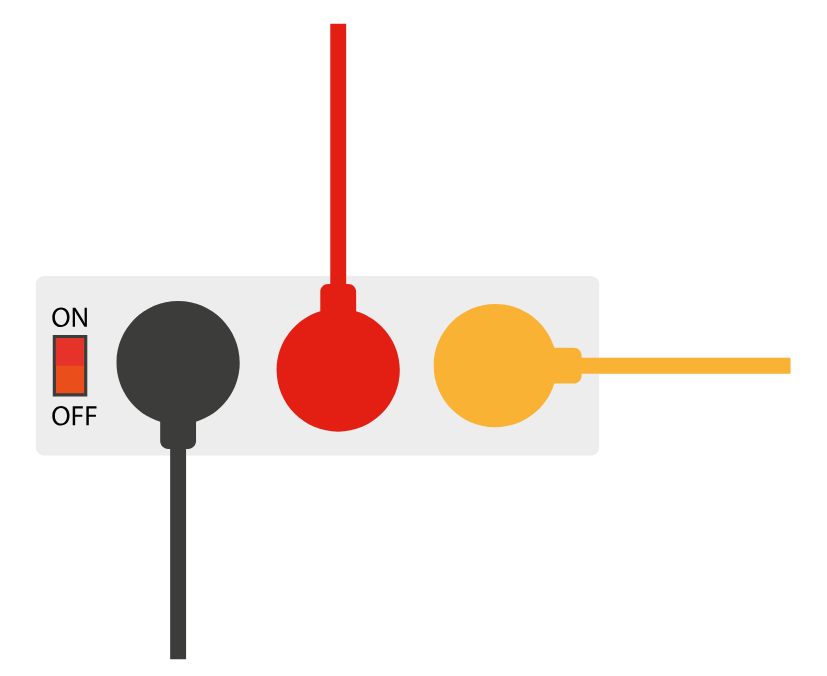
- Do not insert objects into plug sockets.
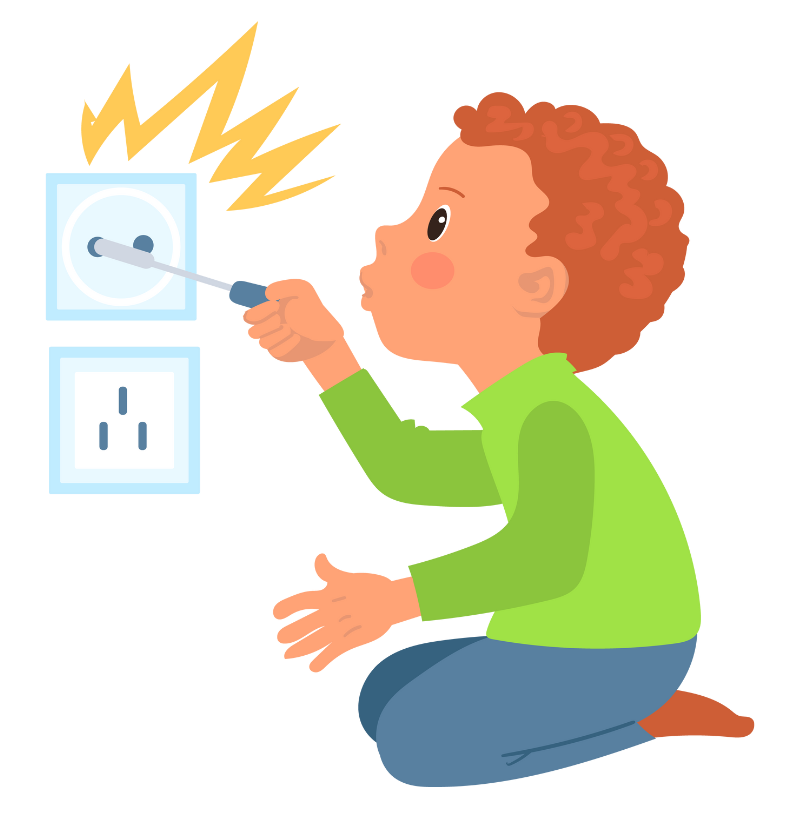
What is an Electrical Plug?
- An electrical plug is a safely device used to connect electrical appliances to the mains electricity supply through a socket.
- It allows the appliance to receive electricity safely from the socket.
- You can easily unplug it whenever you want to stop using your appliance, whether it’s a –

What is it made of, and why is it used?
- A plug is made of plastic or rubber for outer casing as insulator to prevent electric shocks. It contains Brass or copper pins to conduct electricity efficiently.
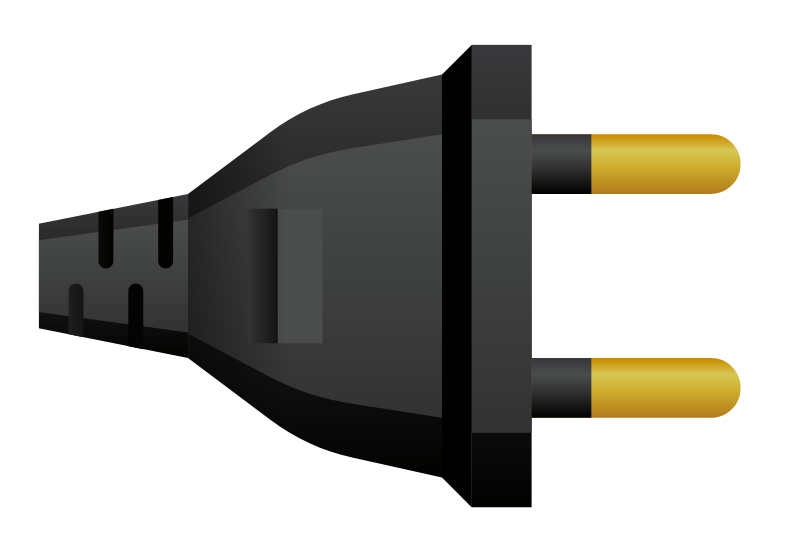
- Inside a plug, three wires are connected in which each wire is made of copper and covered with colored insulation to prevent shocks and short circuits.
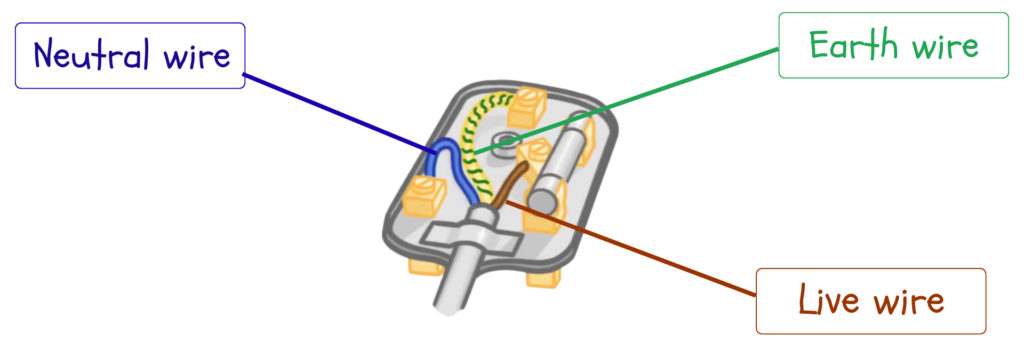
- It is used to safely connect appliances to the power supply and allows easy disconnection when needed.
Wires Used in a Plug and Their Features
- Wires are flexible material used as conductors to carry electric current safely to and from devices.
- They are coated with colored plastic to identify their function easily and for safety.
The Three Essential Wires:
1. Live Wire (Brown / Red)
- Carries current from the power supply to the appliance. It is at high voltage.
- Most dangerous wire as it is always live when the switch is on.

2. Neutral Wire (Blue / Black)
- Completes the circuit by carrying current back to the supply.
- It is at or near zero voltage. Helps to complete the flow of electricity safely.

3. Earth Wire (Green/Yellow)
- Safety wire connected to the metal casing of the appliance.
- It carries current to the ground if there is a fault.
- Prevents electric shocks by ensuring the appliance’s body does not become live.

Role of the Earth Wire in Electrical Safety
- The earth wire (or ground wire) is an important part of electrical safety.
- It gives a safe path for extra or faulty current to go into the ground.
- It is useful during short circuits, damaged wires, or insulation failure.
- Without it, current may pass through metal parts of appliances and give shocks.
- The earth wire prevents shocks by safely sending the current into the ground.
- It helps protect people from electric shocks and accidents.
When an earth wire is properly installed, it prevents us from happening:
- If a live wire accidentally comes in contact with the metal body of an electrical appliance, the earth wire immediately carries the fault current down into the ground.
- This prevents electric shocks, as the metal casing does not become live.
- It also activates the fuse or circuit breaker, which cuts off the electricity supply to prevent further danger.
Real-life Example:
- If an iron doesn’t have an earth wire and has a fault, the current can pass through your body, causing a dangerous shock. But if it has an earth wire, the current safely goes into the ground. The fuse will then switch off the power, keeping you safe.
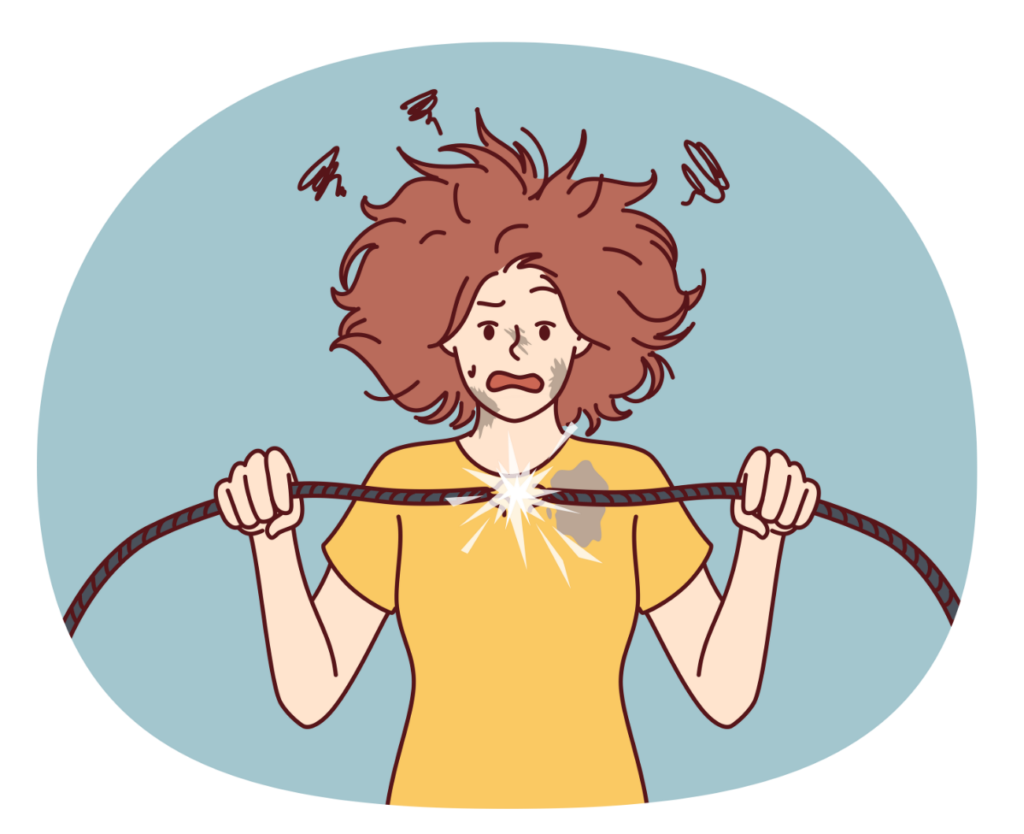
What are Direct Current and Alternating Current?
- Electricity flows in two primary forms: Direct Current (DC) and Alternating Current (AC).
Direct current:
- Definition: Electricity where current flows in one direction only.
- Sources: Batteries, solar cells, DC generators, and electronic devices.
- Applications: Used in torches, remote controls, and phones (via batteries).
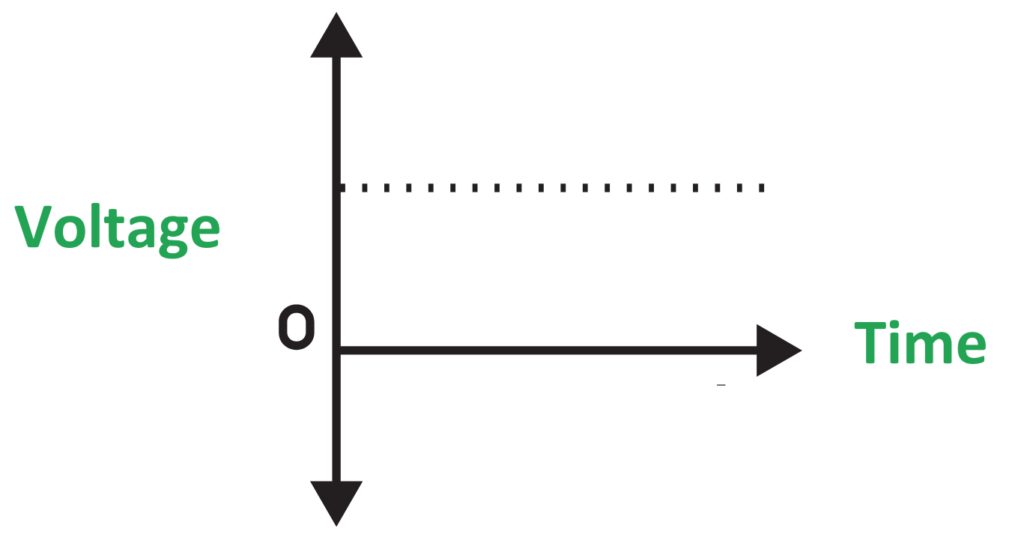
Alternating current:
- Definition: Electricity where current changes direction continuously (back and forth).
- Sources: Power plants, generators, household outlets.
- Applications: Used in homes, schools, and industries.

What are Fuses and How do they Ensure Safety?
- A fuse is a protective device made of a thin wire that melts when too much current flows through it, breaking the circuit.
- It protects appliances and users from damage caused by excessive current.
How Does a Fuse Work?
- A fuse is connected in series with the live wire so that all the current flows through the fuse before reaching the appliance.

- The fuse wire has a low melting point, so it will melt if too much current flows, breaking the circuit and stopping electricity.
Example with a Microwave:
- Suppose we are using a microwave that normally uses 10 A current.
- A 13 A fuse is placed in the plug to protect it, as it allows normal current (10 A) to pass safely.

- If a fault occurs and the current increases to 15 A, the fuse wire will heat up and melt.

- This breaks the circuit, stopping the flow of electricity, preventing overheating or fire in the microwave.
- Then we can replace the fuse with a new 13 A fuse after fixing the fault to use the microwave again safely.
What are Circuit Breakers and Their Role in Safety?
- A circuit breaker is an automatic protective device that cuts off the electricity when the current in a circuit becomes too large.
- Circuit breakers do not need to be replaced after they trip; they can be reset and used again.
How Does a Circuit Breaker Work?
- A circuit breaker also connected in series with the live wire of a circuit.
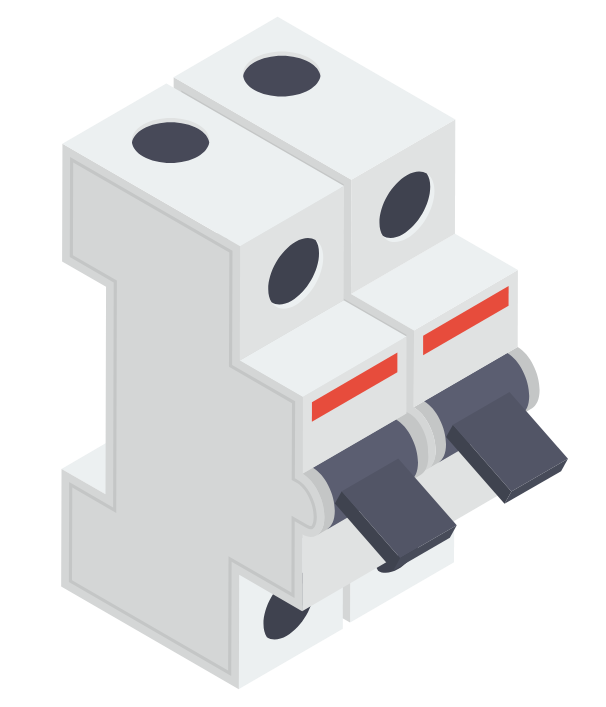
- Inside it, an electromagnet strip detects when the current exceeds the safe limit.
- When the current becomes too high, the electromagnet pulls a switch or the strip bends, opening the circuit and stopping the current.
- This prevents overheating, fires, and damage to appliances.
Example with a Washing Machine:
- A washing machine using 8 A normally is protected by a 10 A circuit breaker.
- If the current rises to 15 A due to a fault, the breaker trips to stop electricity and can be reset after fixing the fault.
What is Double Insulation in Electrical Devices?
- Double insulation means an electrical device has two protective coverings, so we don’t get an electric shock while using it.
- It is used in appliances that do not need an earth wire for safety.
How Does Double Insulation Work?
- The first layer covers the wires inside the appliance to keep electricity inside the wires.
- The second layer is the plastic outer body of the appliance.
- Even if the first layer breaks, the outer layer keeps you safe from touching electricity.
Example:
- Devices which do not have an earth wire but remain safe to use due to double layer of protection are:
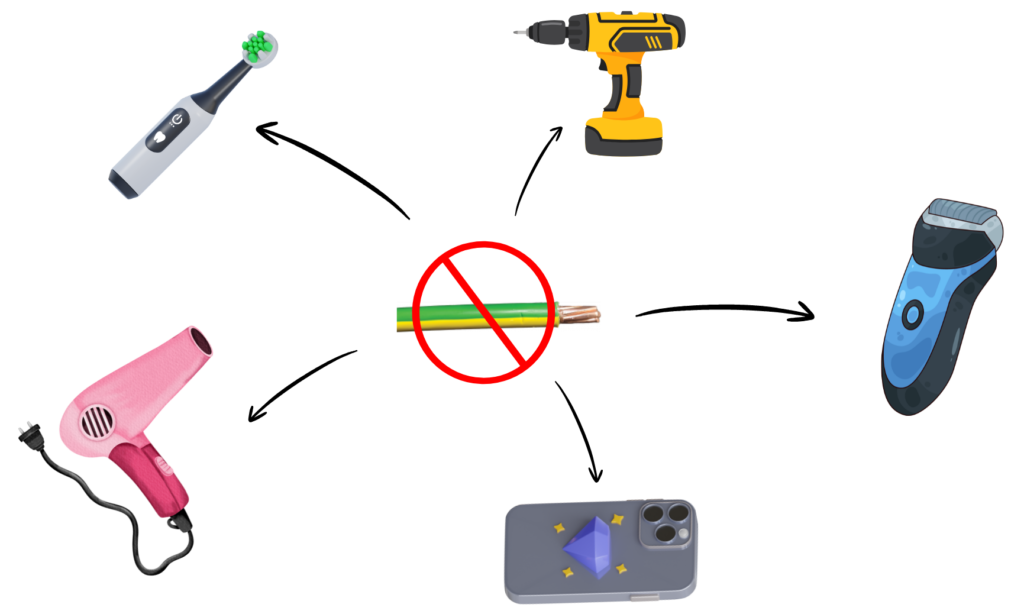
Frequently Asked Questions
Solution:
To prevent electric shocks, burns, and fires while using electricity.
Solution:
Water conducts electricity, increasing the risk of shock.
Solution:
It prevents electric shocks by carrying excess current safely to the ground during a fault.
Solution:
A device used to connect appliances to the mains supply safely.
Solution:
Some plugs have a fuse to break the circuit if too much current flows.
Solution:
For safety and to identify their purpose (live, neutral, earth).
Solution:
Yes, if handled unsafely, it can cause electric shock and burns.
Solution:
Yes, if handled unsafely, it can cause electric shock and burns.
Solution:
Electric current that flows in one direction only.
Table of Content
- Introduction
- What is an Electrical Safety?
- What is an Electrical Plug?
- Wires Used in a Plug and Their Features
- Role of the Earth Wire in Electrical Safety
- What are Direct Current and Alternating Current?
- What are Fuses and How do they Ensure Safety?
- What are Circuit Breakers and Their Role in Safety?
- What is Double Insulation in Electrical Devices?

